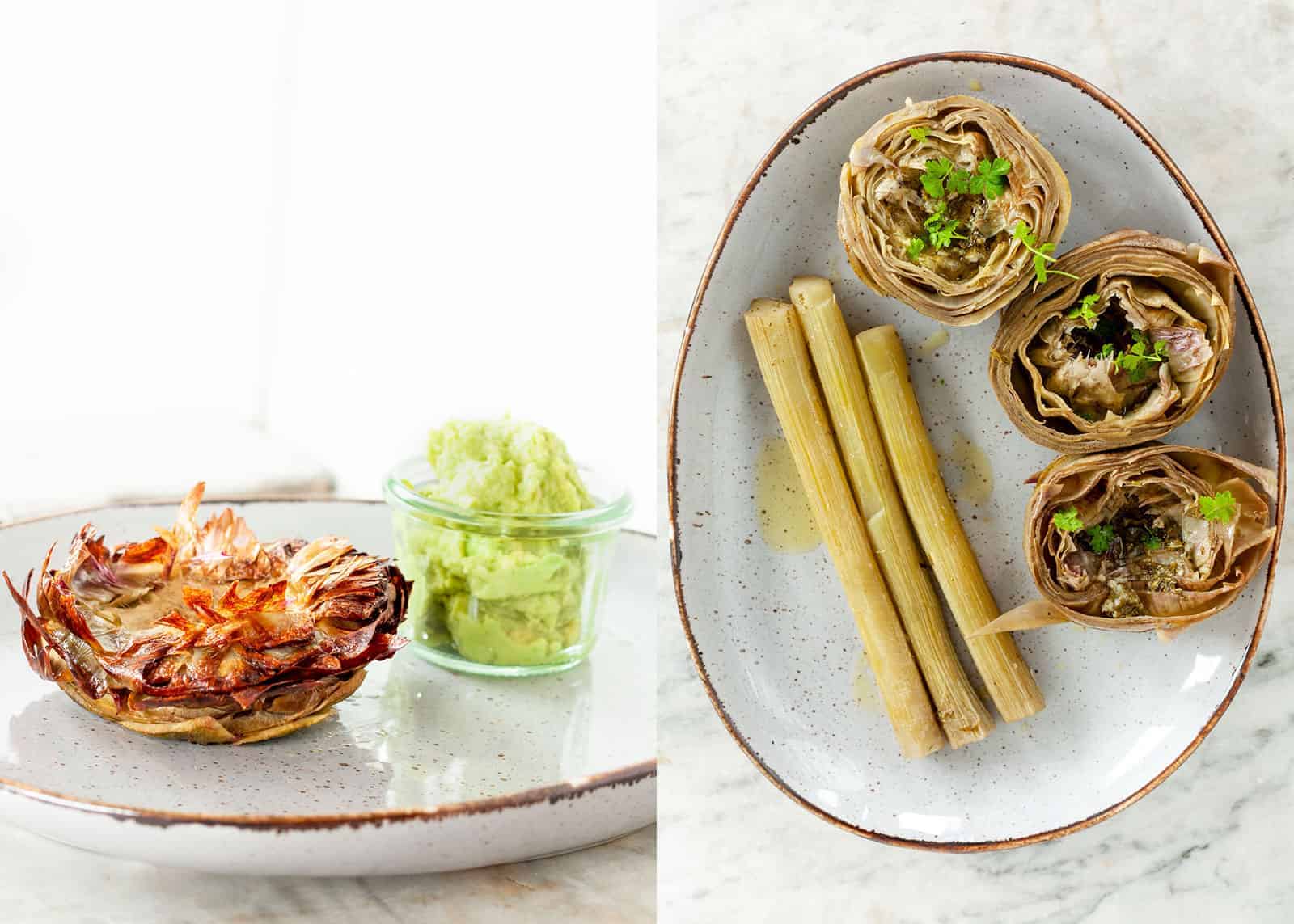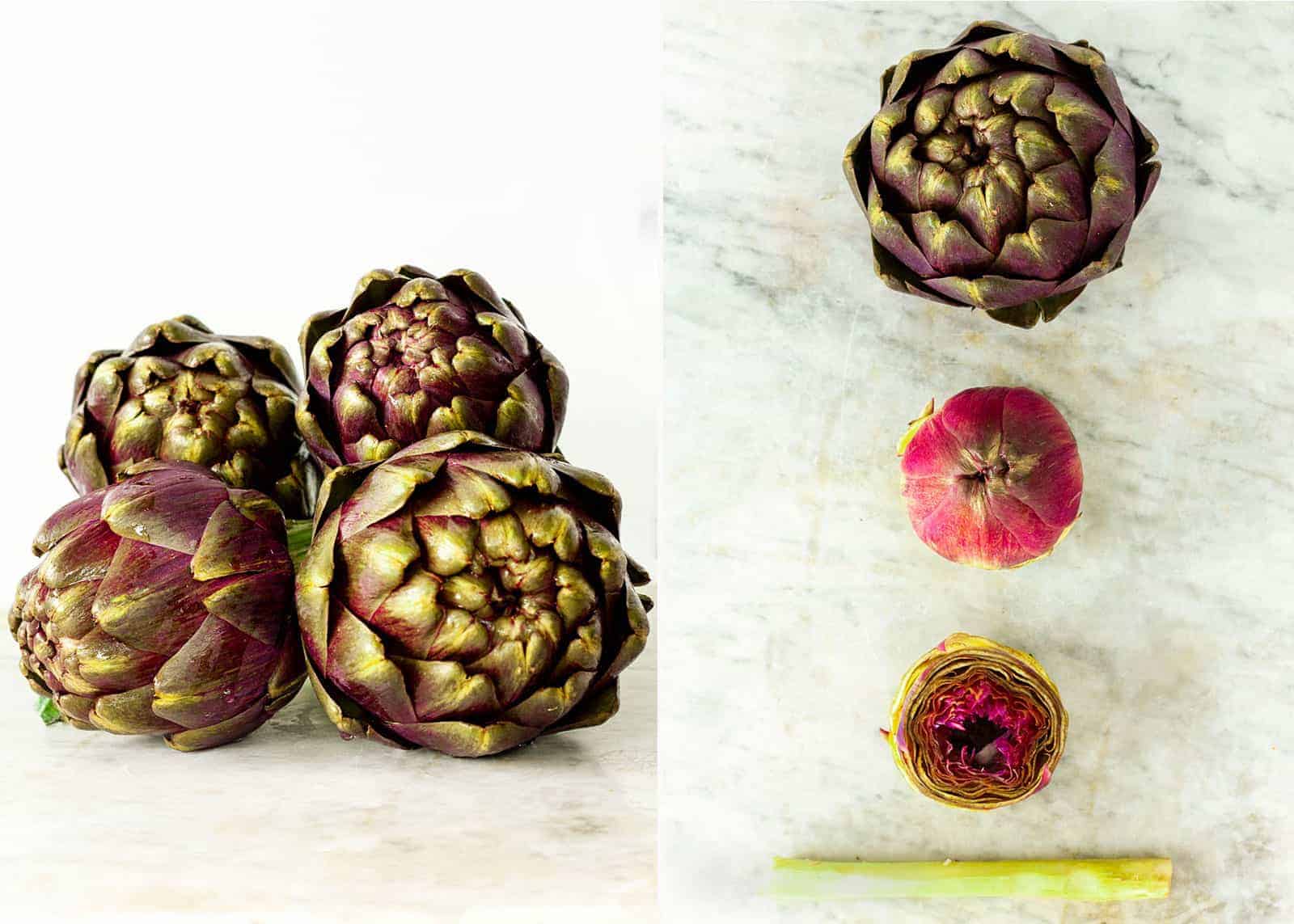
Many moons ago, the Etruscans loved the artichoke. The ancient Greeks even gave it a place in mythology. And the Romans, too, appreciated this fine vegetable. Whether Jewish style, alla giudia, or alla romana – both artichoke recipes from Italy's metropolis will impress with their intense taste.
The tender heart
The artichoke, prickly on the outside but with a tender heart, appears to have captured people's imagination since time immemorial. The Roman writer, Pliny, for example, told a story from the Arab world: a farmer's daughter saw a donkey eating wonderful thistles. She took some with her and tried out various dishes with them. They were a great success at the market. A prince tried the new delicacy and wanted to meet its cook immediately. When the beautiful farmer's daughter stepped in front of him, it was love at first sight for both of them.

The rejecting nymph
Less fortunate was Cynara, the Greek nymph who stubbornly resisted Zeus' advances. As punishment for the rejection, he transformed her into a thistle-like plant – an artichoke. In Latin, the plant was actually called carduus, but it was colloquially referred to as cynara. This remains today as the botanical name of the artichoke.
Jewish immigrants
Another punishment, however, brought inspiration in Rome's kitchens: the expulsion edict of the Catholic rulers of Spain drove thousands of Jews to Rome in 1492. They brought their own as well as Spanish cooking traditions into the Roman cuisine. Culinary researchers attribute the intensive use of olive oil to these influences. The carciofi alla giudia, which have been recorded in recipe books since the 16th century, are fried in olive oil, for example. The carciofi alla romana are steamed with water and olive oil.

About the artichoken
Italian artichokes are divided into three varieties: the violetti (purple, large, elongated, with thorns) from Liguria, Veneto, Tuscany and Sicily; the romaneschi (round, large, without thorns) from Campania and Lazio; the spinosi (small, with thorns) from Sicily and Sardinia. The best variety for our recipes is the romaneschi, and among these the cimaroli would be our first choice. They are succulent, and it is enough to remove the outer hard leaves. Alternatively, you can use mammole. But because they are slightly fibrous on the inside, they are our second choice. If you buy artichokes, the colour should be intensive, without brown spots. You can also literally hear the freshness of the vegetables: If you rub two artichokes together, they should squeak .
📖 Recipe

Artichokes in Jewish and Roman style
Ingredients
- 4 artichokes, round and large
- 3 lemons
- 2 l water
- salt
- pepper, black
- sufficient olive oil
Ingredients for the Roman style:
- water
- 2 garlic cloves
- parsley, fresh
- mint, fresh
Instructions
- Wash the artichokes and remove the outer leaves. Use a sharp knife to cut off the upper crown of the leaves, preferably where the leaf colour changes from green to a yellowish colour. Cut a lemon in half and rub the artichoke at the places where you cut it with the lemon. Otherwise the artichokes would turn brown. Cut off the stems and peel them. Squeeze two lemons and mix the juice with 2l water. Soak the artichokes and stems for 10 minutes in this mixture, possibly with weighing them down with a plate. Then dab dry. An old custom requires that you take the artichokes in your hand and then roll them once around the edge of the table. This should loosen the fibres above the delicate floor and break them up during cooking, creating a small hollow. Using a lemon squeezer works just as well. With cimaroli, this step is not necessary.
alla giudia
- Season the hollow with pepper and salt. Fry the artichokes (often with stalks) for about 10 minutes in a pan with plenty of olive oil. The oil must not get too hot and smoke. Prick the artichoke repeatedly with a wooden skewer to check if it is soft. Drain the oil. Open the leaves so that the artichoke looks like a rose. Just before serving, sauté for another 1 minute. These artichokes are often eaten as a starter. Pluck off leaf after leaf with your hand. Have lemon water and a cloth at the ready to clean oily fingers.
alla romana
- Fill the hollow with a mixture of chopped parsley, mint, garlic, salt and pepper. Press the filling down firmly. Pour ½ glass of water and ¼ glass of oil into a tall pan. Then add the artichokes, upside down, one close to the other, in the pan. Cover and let them simmer for about 45 minutes. This artichoke dish is served in Italy both as antipasti and as a side dish with meat dishes.
Nutrition
Buon appetito!






Leave a Reply